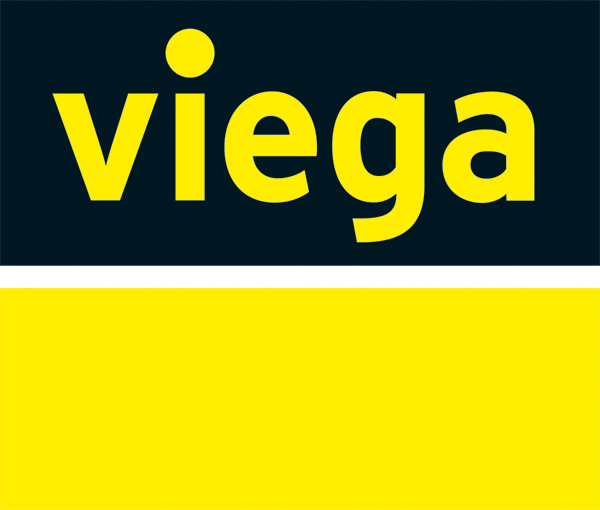Following solid revenue growth in 2013, the majority of U.S.-based engineering and engineering/architecture (EA) firms expect more of the same this year, according to BD+C’s 2014 Giants 300 report. Of the 68 engineering and EA firms that reported a forecast for 2014, 56 companies expect revenue to be higher, with the average growth rate at nearly double digits (9.1%). The same group saw revenue increase 16% on average in 2013.
As the green building movement shifts focus from the new construction sector to existing buildings, engineering firms are well positioned to capitalize on the influx of dollars heading into the reconstruction and retrofit markets. Firms, in turn, are adding services like commissioning (BECx, Cx, and RCx), energy retrofit design, energy auditing, energy modeling, and facilities management consulting in an effort to cater to this growing segment.
San Francisco-based Mazzetti is seeing growth from its recently launched facilities management consulting business, especially on the East Coast. The firm works directly with building owners and their facilities teams to assess how their facilities can operate more efficiently. Mazzetti also advises owners on the best ROI in terms of equipment replacement or repair.
TOP ENGINEERING FIRMS
2013 Engineering Revenue ($)
1 Fluor Corporation $585,150,000
2 Arup 136,464,506
3 Day & Zimmermann 130,576,072
4 WSP Group 124,400,000
5 Affiliated Engineers 104,121,000
6 KPFF Consulting Engineers 94,025,000
7 Syska Hennessy Group 93,902,508
8 Vanderweil Engineers 80,334,000
9 Simpson Gumpertz & Heger 71,640,000
10 AKF Group 67,487,000
SEE FULL LIST
TOP ENGINEERING/ARCHITECTURE FIRMS
2013 EA Revenue ($)
1 Jacobs $3,684,260,000
2 AECOM Technology Corp. 1,769,120,000
3 Parsons Brinckerhoff 316,350,284
4 URS Corp. 280,333,336
5 Burns & McDonnell 160,922,332
6 Thornton Tomasetti 145,038,225
7 SSOE Group 114,501,762
8 CRB 96,860,000
9 Wiss, Janney, Elstner Associates 88,887,000
10 Dewberry 78,770,181
SEE FULL LIST
“We often grow this relationship into more of a capital planning consultant role,” says Walt Vernon, PE, LEED AP, EDAC, Principal and CEO of Mazzetti. “The results are that we have significantly grown our Nashville office, because we’ve increased our work. We’ve hired specialists in this area, which creates a new service line for us.”
Giants 300 coverage of Engineering Firms brought to you by Viega www.viega.us
For TLC Engineering for Architecture, increased emphasis on energy and water services, especially energy audits, is paying dividends. The firm has dedicated staff in each operating unit to focus on these services, with huge success, according to the firm’s CEO and Chairman, Debra A. Lupton, AIA, LEED AP BD+C.
Seeing a growth in demand for water design services, Magnusson Klemencic Associates developed its proprietary Strategic Water Planning tool (http://tinyurl.com/MKAwater) to aid in the assessment and optimization of a project’s global water supplies and demands. The tool takes into account the characteristics of a project—including the site, building type, size, and location—to provide a comprehensive, holistic, and accessible picture of water inputs and outputs, such as stormwater runoff, precipitation, wastewater, evaporation, potable water, and ground infiltration.
The firm has utilized the tool to develop net-zero-water design schemes for several projects, including the Sylvan Theatre at the base of the Washington Monument in Washington D.C.
BIM/VDC/IPD GROWTH
Advanced project modeling and team collaboration continue to play a vital role on engineering projects. More than three-quarters (76%) of the engineering firms that participated in the Giants 300 survey reported at least some design revenue from BIM/VDC-driven building projects. These firms report that, on average, 47% of their total design billings in 2013 were derived from BIM/VDC-driven projects.
Several firms reported innovations in this area:
HNTB has developed a BIM workflow that allows its aviation clients to quickly transfer both geometric and non-geometric data from a project’s BIM model directly into their facility management system, like Tivoli Maximo Asset Management. The process was employed most recently on the Denver International Airport’s Hotel and Transit Center Program. The facilities team plans to use the BIM data for ongoing operations and maintenance management, as well as feasibility studies and planning for future projects on the site.
The firm’s sports practice launched a fully parametric design tool that replaces its 2D bowl and sightline design program. The new tool allows for fast, dynamic design iteration in a 3D BIM environment.
Thornton Tomasetti, through its Core Studio computational modeling and R&D group, has developed dozens of breakthrough engineering design and analysis tools, including a cloud-based, rapid-iterative design program (see BIM Giants section, page 54), building performance analysis software, and a series of custom plug-ins for commercially available BIM/VDC/CAD tools. Custom plug-ins include a parameter explorer, a suite of automated drawing production tools, and programs that check and improve the accuracy and quality of BIM models. Core Studio also builds physical prototypes using its in-house 3D printer.
Robins & Morton is carving out a niche in the emerging integrated project delivery (IPD) field. The construction and engineering giant has worked on four pure IPD projects with multi-party agreements—including the Alfond Center for Health at MaineGeneral Medical Center in Augusta, Maine, a BD+C 2014 Building Team Award winner—and completed 44 projects utilizing many of the elements and management practices of the IPD approach.
Read BD+C's full 2014 Giants 300 Report
Related Stories
Lighting | Mar 4, 2024
Illuminating your path to energy efficiency
Design Collaborative's Kelsey Rowe, PE, CLD, shares some tools, resources, and next steps to guide you through the process of lighting design.
MFPRO+ News | Mar 1, 2024
Housing affordability, speed of construction are top of mind for multifamily architecture and construction firms
The 2023 Multifamily Giants get creative to solve the affordability crisis, while helping their developer clients build faster and more economically.
Multifamily Housing | Feb 29, 2024
Manny Gonzalez, FAIA, inducted into Best in American Living Awards Hall of Fame
Manny Gonzalez, FAIA, has been inducted into the BALA Hall of Fame.
K-12 Schools | Feb 29, 2024
Average age of U.S. school buildings is just under 50 years
The average age of a main instructional school building in the United States is 49 years, according to a survey by the National Center for Education Statistics (NCES). About 38% of schools were built before 1970. Roughly half of the schools surveyed have undergone a major building renovation or addition.
MFPRO+ Research | Feb 28, 2024
New download: BD+C's 2023 Multifamily Amenities report
New research from Building Design+Construction and Multifamily Pro+ highlights the 127 top amenities that developers, property owners, architects, contractors, and builders are providing in today’s apartment, condominium, student housing, and senior living communities.
AEC Tech | Feb 28, 2024
How to harness LIDAR and BIM technology for precise building data, equipment needs
By following the Scan to Point Cloud + Point Cloud to BIM process, organizations can leverage the power of LIDAR and BIM technology at the same time. This optimizes the documentation of existing building conditions, functions, and equipment needs as a current condition and as a starting point for future physical plant expansion projects.
Data Centers | Feb 28, 2024
What’s next for data center design in 2024
Nuclear power, direct-to-chip liquid cooling, and data centers as learning destinations are among the emerging design trends in the data center sector, according to Scott Hays, Sector Leader, Sustainable Design, with HED.
Windows and Doors | Feb 28, 2024
DOE launches $2 million prize to advance cost-effective, energy-efficient commercial windows
The U.S. Department of Energy launched the American-Made Building Envelope Innovation Prize—Secondary Glazing Systems. The program will offer up to $2 million to encourage production of high-performance, cost-effective commercial windows.
AEC Innovators | Feb 28, 2024
How Suffolk Construction identifies ConTech and PropTech startups for investment, adoption
Contractor giant Suffolk Construction has invested in 27 ConTech and PropTech companies since 2019 through its Suffolk Technologies venture capital firm. Parker Mundt, Suffolk Technologies’ Vice President–Platforms, recently spoke with Building Design+Construction about his company’s investment strategy.
Performing Arts Centers | Feb 27, 2024
Frank Gehry-designed expansion of the Colburn School performing arts center set to break ground
In April, the Colburn School, an institute for music and dance education and performance, will break ground on a 100,000-sf expansion designed by architect Frank Gehry. Located in downtown Los Angeles, the performing arts center will join the neighboring Walt Disney Concert Hall and The Grand by Gehry, forming the largest concentration of Gehry-designed buildings in the world.

















